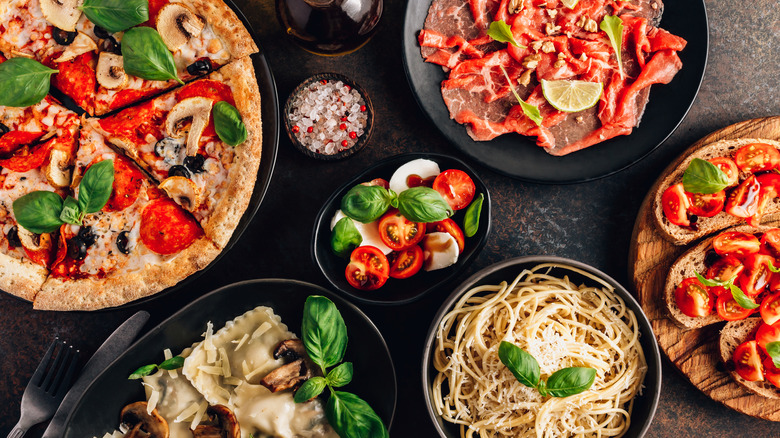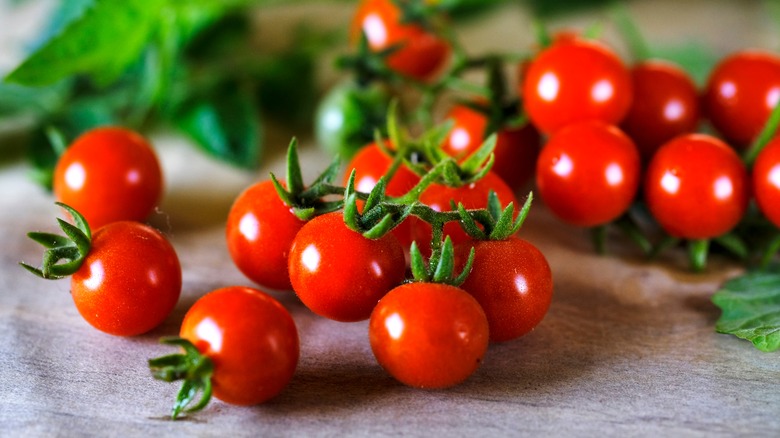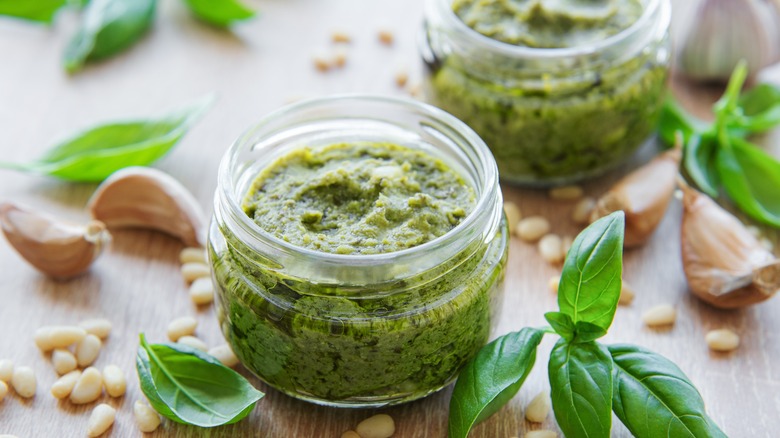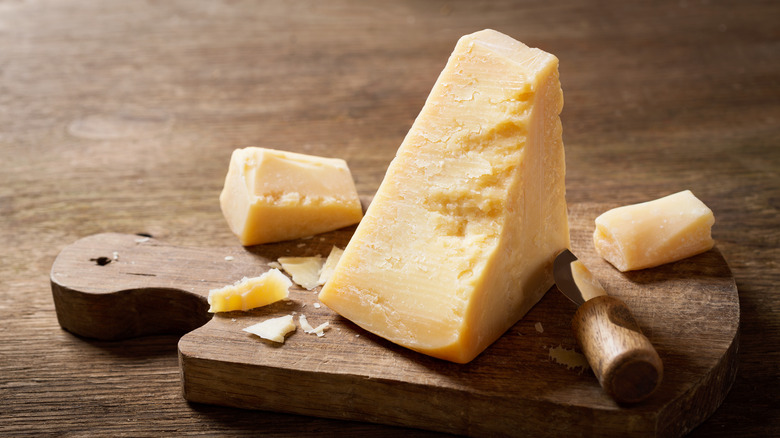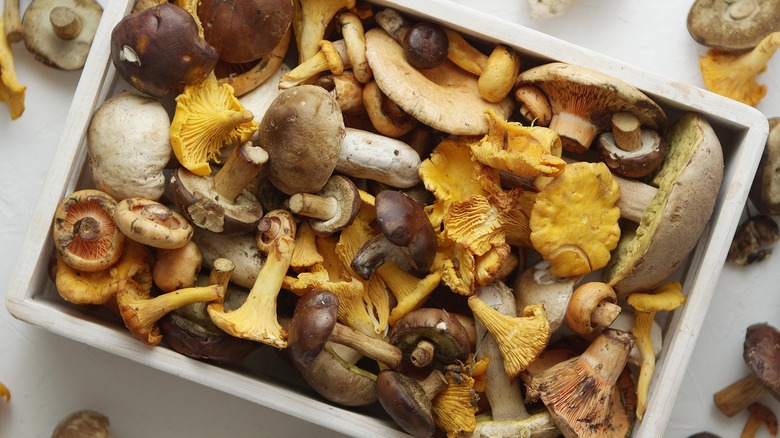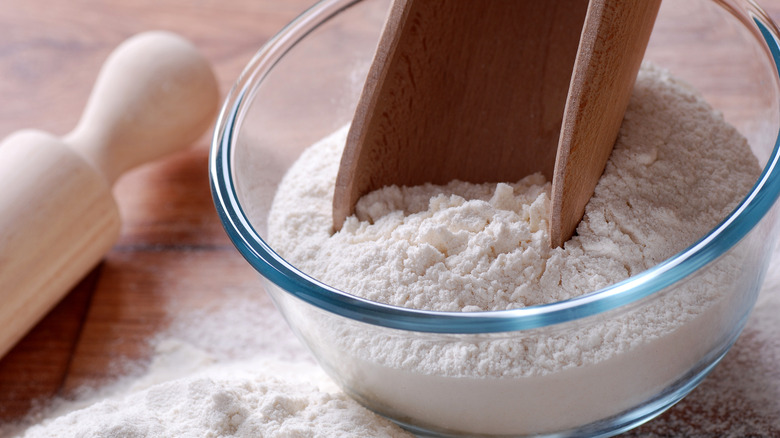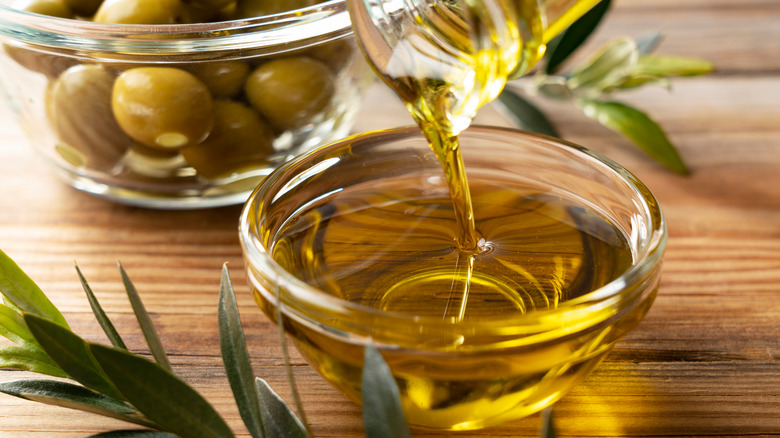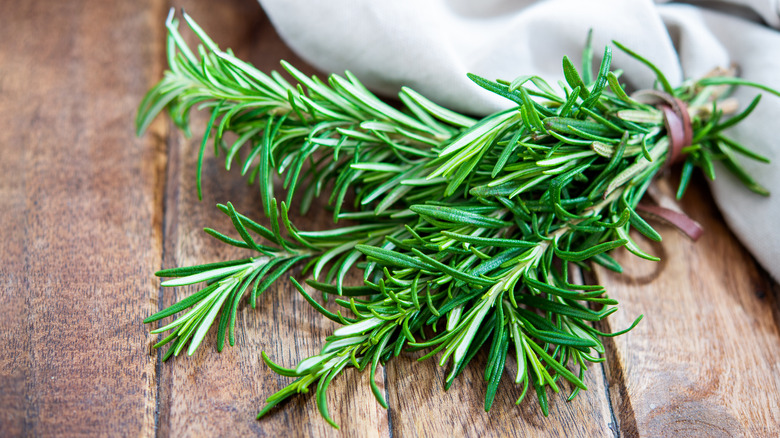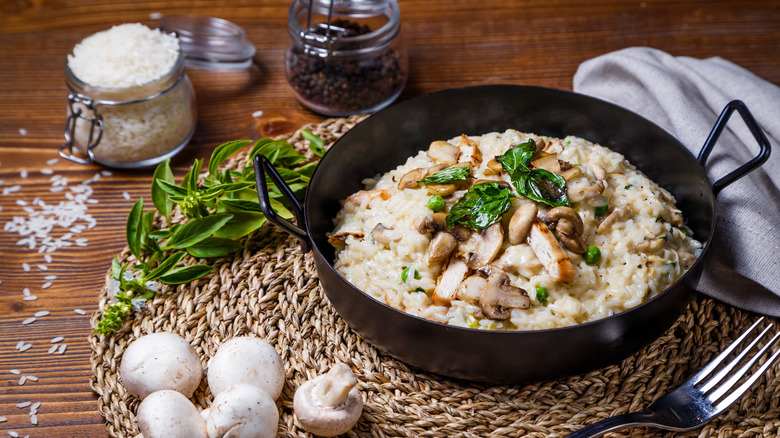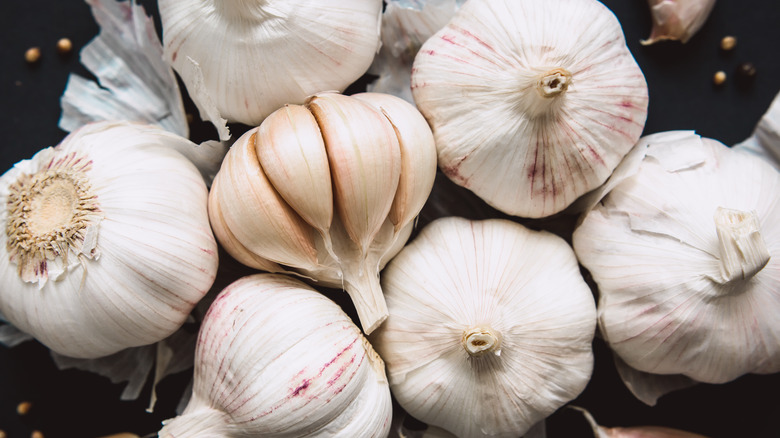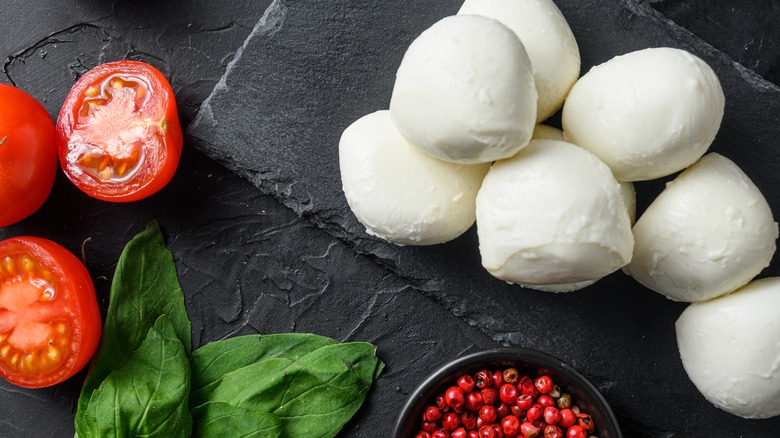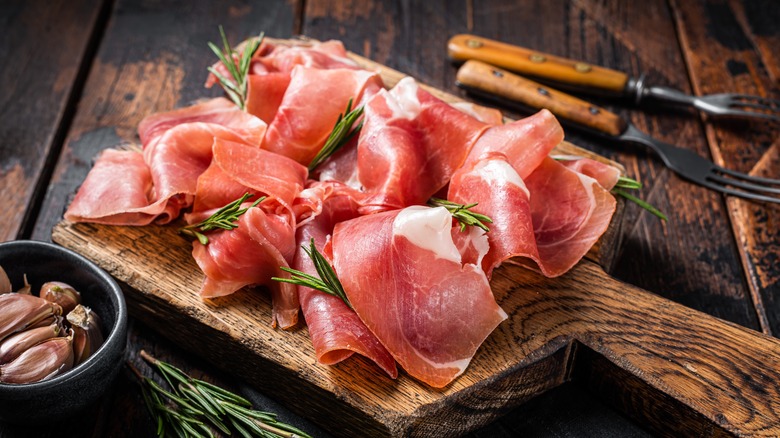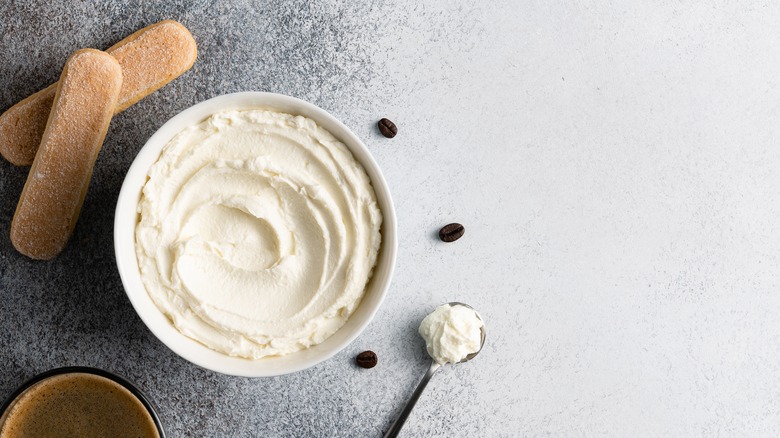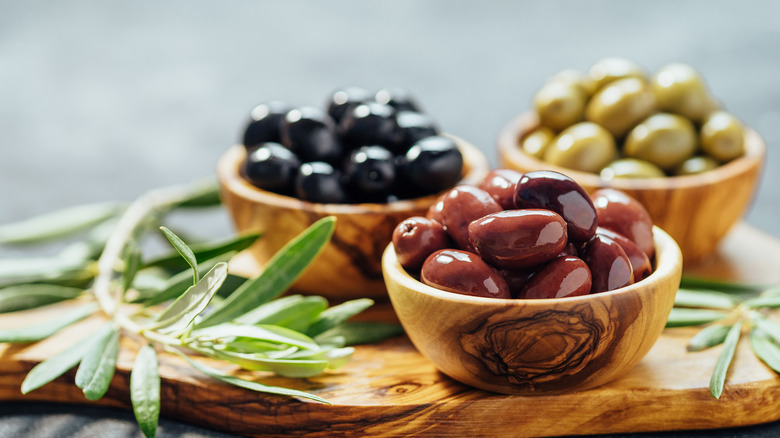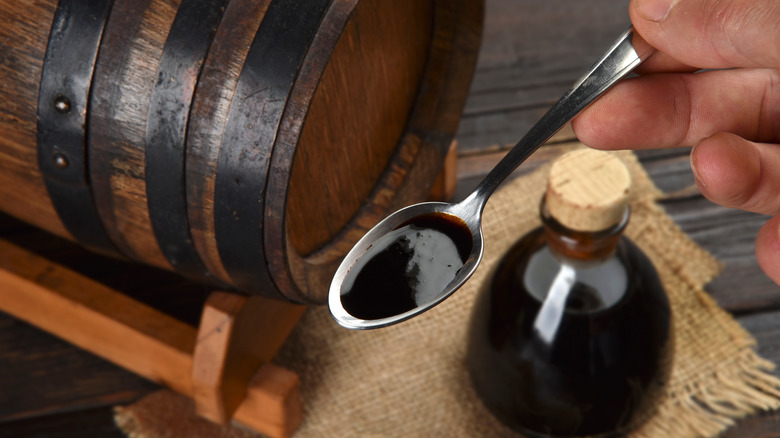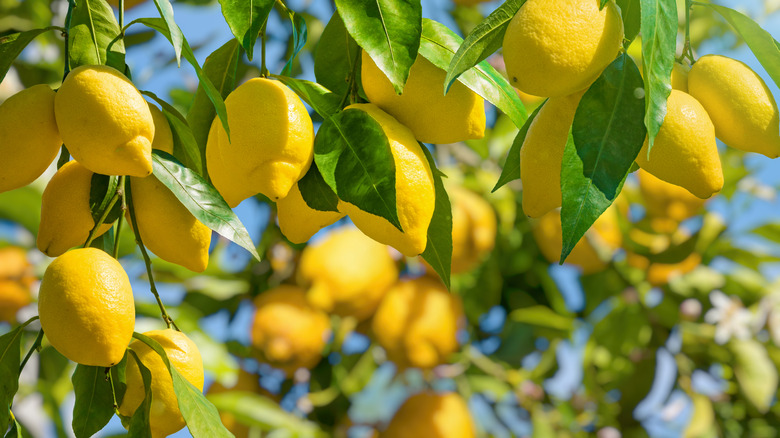15 Ingredients You Need To Cook Better Italian Food
Celebrated worldwide as one of the most delicious types of food on the planet, Italian cuisine is so much more than pizza and pasta. While these foods are an important part of Italy's culture, the Italians eat a wide variety of fresh ingredients and produce that any budding chef should include in their Italian recipes.
From zesty Amalfi Coast lemons to briny Sicilian olives, Italians put a big emphasis on the importance of local, seasonal elements. Italian food is rooted in simplicity, where a few quality ingredients are allowed to shine without being overshadowed by a clutter of unnecessary flavors.
To cook authentic Italian food, it is crucial to understand the importance of high-quality ingredients and how they complement each other. Join us as we look at the most essential components of Italian cooking — then stock your pantry like a true Italian and transport yourself to the sunkissed land of Italy with every meal.
Tomatoes
Is there any more classic Italian ingredient than the humble tomato? Whether freshly picked from the vine, semi-dried and packed in oil, or sieved and canned into passata, their vibrant color and fresh flavor make tomatoes a beloved staple at the center of many Italian dishes.
The hot Italian summers with long sunny days make Italy the perfect country for growing tomatoes. The south of Italy is especially famous for tomatoes, with Puglia providing more than 50% of the country's crop.
Tomatoes are versatile ingredients that can accompany a variety of foods, including meats, cheese, and lots of vegetables. Two of Italy's most iconic dishes (pizza and pasta, of course!) rely heavily on tomatoes to complement them. What would a Margherita pizza be without its velvety tomato base or spaghetti bolognese without a tangy tomato sauce to balance the rich meat?
The variety of tomato is important when cooking Italian food, as the acidity can affect the flavor of the dish. Grown in volcanic soil near Mount Vesuvius, San Marzano tomatoes are commonly sold canned and are perfect for cooking in sauces due to their dense flesh and rich flavor.
Meanwhile, sweet cherry tomatoes and baby plums are perfect for tossing in salads, roasting whole alongside fresh fish, or simply eating off the vine as a healthy treat. However you like your tomatoes, whether topping a tasty bruschetta or simply drizzled with olive oil, they will bring a burst of flavor to any Italian dish you choose to make.
Basil
With its sweet but fresh flavor, basil stands out above other herbs as the aromatic star of Italian cuisine. Though technically a variety of mint, the types of basil used in Italian cooking — sweet basil and basil Genovese — do not have the minty tones of the rest of the basil family. Instead, Italian basil has a fragrant, peppery flavor that complements other Italian ingredients perfectly.
Though most often used as a garnish and to finish off a dish, basil plays a starring role in one of Italy's most famous sauces — pesto Genovese. This vibrant green paste is a staple in Northern Italian cuisine, its strong umami flavor accompanying meat, fish, and pasta. Made by blending basil with pine nuts, parmesan, olive oil, and garlic, pesto is simple to make at home and adds delicious savory notes to a number of Italian dishes.
Basil famously featured on the first ever Margherita pizza, served in Naples in 1889. It is claimed the chef chose the toppings of mozzarella, tomato, and basil to represent the colors of the Italian flag to serve to Queen Margherita.
To make sure you always have fresh basil on hand for your Italian dishes, consider growing your own basil plant. They are easy to look after, and nothing can beat the freshness of hand-grown herbs. If using cut basil, don't store it in the fridge, as the leaves will turn black. Instead, put it in a glass with some water and store it at room temperature.
Parmesan cheese
One of the most famous Italian ingredients, Parmesan cheese has a unique flavor that lends itself to a huge number of savory Italian dishes. The ultimate umami flavor, Parmesan is used to finish off many Italian sauces and is served on top of most pasta dishes worldwide.
Hailing from the city of Parma in Emilia-Romagna in northern Italy, Parmigiano Reggiano has PDO status, meaning it can only be made in a few select places in the region. A very mature cheese, most Parmesan is aged for 24-36 months, but it can be as much as eight years.
The strength of flavor of Parmesan means that a little can go a long way, with a grating of cheese finishing off risottos and pasta dishes perfectly. It can also be served as part of a cheese or charcuterie board, pairing nicely with cured meats and fresh fruit such as grapes.
Similar cheeses such as pecorino and Grana Padano have a similar flavor and texture and are often substituted for parmesan. However, if you are looking for the most authentic Italian experience, nothing quite compares to Parmigiano Reggiano.
Porcini mushrooms
In Italian cuisine, mushrooms have a big part to play: Their earthy flavor and meaty texture make them an essential ingredient in many dishes. Though lots of mushroom varieties are used in Italian cooking, one stands out from the rest — the porcini mushroom.
Porcini mushrooms can be eaten fresh and make a great addition to risotto and pasta sauces such as boscaiola (woodcutter sauce). They can also make a great replacement for meat in a vegetable lasagna.
Porcini are also sold dried, meaning they have a long shelf life and can be kept as a kitchen pantry staple to have on hand whenever you need them. To use dried porcini, simply soak them in hot water for around 20 minutes and then use them in the same way as fresh. The liquid that is left behind will be filled with umami flavor and goodness from the mushrooms — you don't want to throw it away! It can be added to risotto, soup, or any other dish where liquid is needed, giving it a strong savory note.
Type 00 Flour
If you aspire to be an Italian cooking aficionado, making pizza and pasta from scratch is a skill you will need to add to your repertoire. Choosing the correct type of flour is crucial if you want to create pasta and pizza that would pass muster with an Italian Nonna.
Tipo 00 flour is considered the pinnacle of flour in pizza making and is also used extensively in making fresh pasta. Double zero flour is the most finely ground flour available, which makes it ideal for making a silky smooth dough that will turn into a perfectly light pizza and pasta. It is an especially good flour to use when making pasta styles that need delicate shaping, such as ravioli and tortellini.
Pizza made with tipo 00 flour, as opposed to all-purpose flour, will have a crispy crunch as you bite into it, but will be perfectly chewy inside. It is also easier to roll the dough extremely thinly if double zero flour has been used, resulting in the classic Italian thin crust.
Tipo 00 flour is a specialty ingredient outside of Italy and may not be available in your local supermarket. It may be worthwhile sourcing it online and buying a few packs, to ensure you always have some in your pantry for pizza night.
Olive oil
At the heart of many classic Italian dishes is a pantry staple found in most home kitchens — olive oil. Used for sautéing, drizzled over dishes as a finishing touch, or serving as a dip for a freshly baked ciabatta, olive oil is the foundation of Italian cuisine.
Olive oil is the liquid extracted from fresh olives, grown abundantly in Italy and across the Mediterranean. Olive trees were first grown in Italy around 800 BC, and olives have been an important part of Italian culture ever since.
The most common type of olive oil used in Italy is extra virgin olive oil (EVOO). This is the least refined version of olive oil and is made from the first pressing of the olives. EVOO has a dark, yellow-green color and a strong olive flavor not present in lighter oils. It also has a low smoke point, meaning it is not the best form of oil to cook with. Save your extra virgin olive oil for drizzling over salads, and use a cheaper, lighter olive oil for cooking.
Olive oil is one of the star ingredients in a dish that showcases the brilliant simplicity of Italian cooking — pasta aglio e olio. As fun to eat as to pronounce, it demonstrates how a few high-quality ingredients can make a stunningly tasty dish. Containing only pasta, olive oil, garlic, and perhaps some fresh parsley or chili flakes, this classic dish, thought to have originated in Naples, is the perfect example of the importance of olive oil in Italian cuisine.
Rosemary
When it comes to woody herbs, none is more essential to Italian cuisine than rosemary. With its unmistakable fragrant scent, rosemary adds a depth to sauces and meats and elevates potatoes to a new level.
A feature of both the gardens and kitchens of Italy, any amateur Italian cook should consider having a Rosemary bush in their herb garden. It produces pretty purple flowers that not only add color to your landscape but can also decorate your plate as they are safe to eat.
Rosemary has a strong flavor with citrus undertones and works brilliantly in a marinade, infusing meat or fish with its deep aroma. Roast meat for Sunday lunch is traditional in Italy, and rosemary will likely feature no matter what meat is served. It pairs especially well with lamb and beef but can also be used to season pork and veal and as a key ingredient in creating the perfect crispy roast potatoes.
Another classic Italian dish to feature rosemary is focaccia. This soft, airy bread has rosemary leaves dotted throughout the dough, infusing its signature aroma as the bread bakes. The result is a bread that is soft on the inside with a crispy golden crust and a beautiful flavor, making the perfect appetizer or side dish when dipped in extra virgin olive oil. This delectable Italian classic is even served for breakfast in Liguria, where it replaces unhealthy processed alternatives such as croissants and pastries.
Risotto rice
There are different ways to cook rice in Italian cuisine, but one method stands head and shoulders above the rest — risotto. A titan of Italian comfort food, risotto is a labor of love, needing constant attention for 30-60 minutes, resulting in a creamy, indulgent dish that is beloved throughout Italy and worldwide.
The usual rice used in risotto is arborio rice, a short-grain rice named after the town of Arborio in the Po Valley, where it was first grown. Arborio rice contains more starch than regular rice, and the starch is released during cooking. This is why it is essential to stir risotto constantly as it cooks to release the starch and give it the trademark creamy consistency.
The most straightforward risotto to make is the classic risotto Milanese. Named after Milan, the trademark yellow color comes from the saffron infused in the rice. The risotto is finished with parmesan cheese and can be eaten as a main dish or an accompaniment to meat dishes.
For a more luxurious version, try risotto alla pescatora. Piled high with luscious shellfish such as prawns, mussels, and clams, this fisherman's risotto is the perfect way to showcase the beautiful produce in the waters of Italy's coastal towns. When cooking at home, choose the freshest seafood possible to create a dish that will transport you to Bella Italia with every bite.
Garlic
While garlic is synonymous with Italian cooking, it may surprise amateur cooks to learn that Italians use garlic sparingly. Though most Italian-American dishes are heavily seasoned with garlic, it is used much more subtly in authentic Italian cuisine.
Originally, garlic was associated with poverty, and its overuse can still be met with disdain today. Even the highest caliber of Italian chefs aren't immune from the controversy. Michelin-starred chef Carlo Cracco was criticized publicly after having the audacity to include garlic in his amatriciana sauce (via Taste Cooking).
That's not to suggest that garlic doesn't have an important part to play in Italian food, simply that Italians will not put garlic where it doesn't belong. One of the simplest Italian pasta dishes features garlic as a star ingredient: aglio e olio. Garlic is paired with olive oil to create a classic pasta dish that is as delicious as it is simple.
The cooking of the garlic itself is key to perfecting the flavor of Italian dishes. The stench of burnt garlic is hard to disguise, and a single burnt clove can ruin an entire pot of food. Avoid cooking garlic over high heat, and add other ingredients quickly to prevent charring those precious cloves.
To truly do justice to garlic in Italian cuisine, understanding the subtlety of the ingredient and balancing its use with other flavors is key. Give it the chance to shine when appropriate, and let those other flavors have center stage the rest of the time.
Mozzarella
Mozzarella is the perfect Italian cheese, famous for topping virtually every pizza worldwide. Soft and light when fresh and gooey and indulgent when melted, its mild flavor pairs with so many other classic Italian ingredients, making it a versatile addition to your Italian pantry.
True buffalo mozzarella is made — as the name suggests, from buffalo milk — usually from water buffalo raised in southern Italy. This milk contains twice as much fat as cow's milk, meaning that mozzarella di bufala is much creamier than its cow's milk counterparts. In Italy, cow's milk mozzarella is known as fior di latte, but in other countries is simply called mozzarella. If you are looking for the authentic, creamy version, be sure to look for cheese labeled as buffalo mozzarella, but be aware that it comes with a premium price tag.
When preparing classic Italian dishes, it is best to use buffalo mozzarella in dishes that won't be cooked. This premium ingredient benefits from being served in its fresh form, perhaps as the star of a Caprese salad alongside tomatoes and basil.
When cooking with mozzarella, especially when making a pizza, fior di latte is a better option. In most countries outside of Italy, this is simply standard mozzarella. It is a drier form of mozzarella and will not leave 'puddles' of water on the pizza after cooking, something that is likely with buffalo mozzarella.
Parma Ham
When it comes to classic Italian meats, Parma ham stands out with its sweet flavor and delicate texture. Commonly seen draped over melon as an appetizer or cheese on a charcuterie board, this cured meat features in many Italian dishes, both in its soft, cured form or cooked until crispy.
Hailing from the Emilia Romagna region of Italy, prosciutto Di Parma has PDO (protected designation of origin) status, meaning only ham produced in that region of Italy can be called Parma ham. Unlike many other types of ham, Parma ham contains no nitrates or additives of any kind. It is made using only salt and pork, making it a healthier choice than other processed meats.
Parma ham is beautiful served thinly sliced alongside other fresh ingredients. Its velvety texture pairs wonderfully with tomatoes, peaches, and figs, creating the perfect blend of salty and sweet. It can also be cooked, giving it a crispy texture and a more bacon-like flavor. The classic dish veal saltimbocca, literally meaning 'jump in the mouth,' showcases Parma ham wrapped around veal cutlets and sage leaves. The meat is then sautéed in butter and white wine, creating a mouthwatering sauce that complements the crispy cooked Parma ham perfectly.
No matter how Parma ham makes its way into your cooking, via a classic dish or as a tasty filling in a sandwich, it is a special ingredient that is a great example of Italy's dedication to traditional methods of food preparation, which can be tasted in every bite.
Mascarpone
When it comes to Italian cheese, mascarpone is among the creamiest. Originating in the Lombardy region of Italy, this rich cream cheese is loved worldwide for its use in both savory and sweet dishes. With a fat content of 44%, it contains significantly more fat than regular cream cheese and has a rich, luscious consistency that adds an indulgent touch to many dishes.
One of Italy's most famous desserts, tiramisu, owes its creamy decadence to mascarpone. Layered with ladyfingers soaked in coffee and marsala wine, the mascarpone provides the perfect creamy balance to create a dessert that is loved far beyond the shores of Italy.
Mascarpone has a big part to play in Italian savory dishes, too. It can easily replace cream in a number of dishes, from risotto to pasta sauce. It can also serve a similar role to ricotta, acting as a delicious stuffing for pasta like tortellini or meat such as chicken.
Mixing mascarpone with fresh herbs is also a great way to whip up a delicious spread in no time at all. Try it smeared on a bagel with some smoked salmon or as the base for mushroom crostini.
Olives
From the Italian Riviera to the famous Nocellara of Sicily, olives are one of Italy's most beloved foods. They are the source of the golden elixir of olive oil and are an important ingredient in their own right, gracing the Italian dinner table daily.
One of the most common uses for olives outside Italy is as part of an antipasto platter, their robust flavor pairing beautifully with cured meats, creamy cheese, and a glass of wine to make the perfect light lunch or a wonderful start to a substantial meal. In Italy, however, olives are used in a wide variety of dishes, their salty flavor lending a great savory punch to many recipes.
In the case of olive ascolane, the olives themselves are the star ingredient. Named after the Marche city of Ascoli Piceno and using green olives grown in the region, this delicious appetizer involves stuffing the large olives with meat — often a mixture of pork and beef — and breading and deep frying them until golden. This delectable dish shows how olives can be elevated to a central role rather than simply an accompaniment.
Another iconic way in which olives can shine in Italian cuisine is in the form of tapenade, a salty paste made from olives, capers, and sometimes anchovies. It takes less than five minutes to make and is a healthy, scrumptious puree that can be eaten on bread, crackers, or, let's be honest, straight from the spoon!
Balsamic vinegar
With its rich, complex flavor, balsamic vinegar sits alongside extra virgin olive oil as the king and queen of Italian condiments. Originating in the Emilio Romagna region of Italy, authentic Italian balsamic vinegar tastes nothing like the cheap supermarket versions in the United States. It is a thick, luxurious syrup with deep, oaky notes and a balanced sweet and savory flavor.
Acetico balsamico di modena has PDO status, meaning the vinegar has to be aged in wooden barrels for a minimum of 12 years, 25 if it is to earn the label 'very old.' Balsamic vinegar has many uses in Italian cooking, both in marinades for cooked food and as a dressing to finish dishes off perfectly. Coating vegetables in it before roasting will give them the perfect tangy finish that enhances their natural sweetness.
One of the places balsamic vinegar really shines is drizzled over a fresh caprese salad. Paired with three other quintessential Italian ingredients — mozzarella, tomatoes, and basil — the addition of balsamic vinegar takes this classic dish to another level.
Another unexpected perfect combination is with fresh strawberries. The contrast of the sweet berries with the tangy vinegar is a match made in heaven and proves that balsamic vinegar's versatility means it can enhance savory and sweet dishes equally.
Lemons
A classic symbol of the sun-drenched Mediterranean, lemons have been used in Italy since Roman times and are still a staple of Italian cuisine today. Though famously grown in the Amalfi Coast and Sicily, lemons can be found growing in many areas of Italy, including the north. Italian lemons bring a touch of zing to virtually any dish, from savory to sweet, and are regularly used during cooking to enhance flavors of other foods.
Pasta al limone is a classic, simple Italian dish proving that exceptional flavor doesn't require sweating over a hot stove for hours. The minimal ingredients in this meal allow the lemon to shine, with both juice and zest being crucial components. Add some butter and parmesan, then pour over spaghetti for a perfect midweek meal.
On the sweet side of things, torta al limone is a popular dessert, since Italian lemons are generally less acidic than most and lend themselves well to desserts. The lemon curd in this Italian lemon tart is smooth and luxurious, with a beautiful tang to balance the sweetness.
Of course, we can't mention Italian lemons without paying homage to the ultimate citrus drink — limoncello. Made from the sweet, punchy lemons of southern Italy, limoncello is a liqueur that captures the essence of the Italian way of life. Usually served as an after-dinner digestif, one sip of this intense liqueur will instantly transport you to the Amalfi coast.

